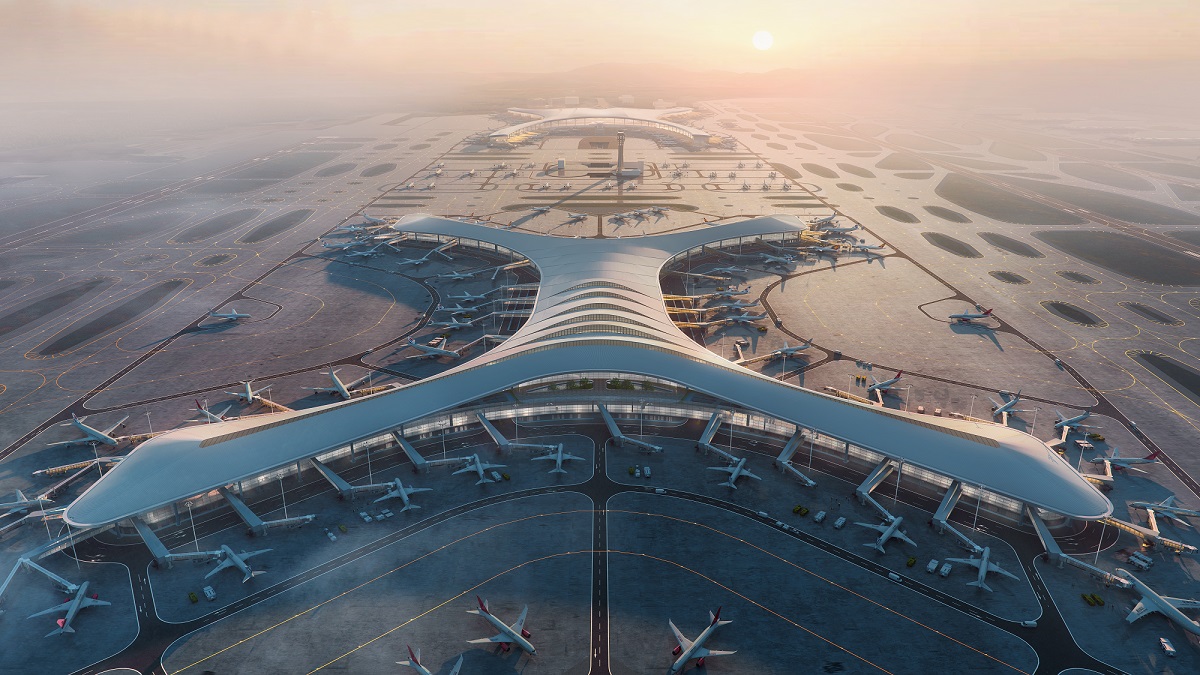 Bridging News
Bridging News
Singapore to Enhance Cargo Flow to Southeast Asia and Southwest China Via Chongqing Hub | Insights
Chongqing - Chongqing Jiangbei International Airport unveiled its Terminal 3B on April 9, solidifying the city's rise as a key international aviation hub. Industry leaders and aviation experts gathered to discuss strategies for expanding its global connectivity.

The aerial view of Terminal 3B of Chongqing Jiangbei International Airport. (Graphic/Chongqing Jiangbei International Airport)
"The Chengdu-Chongqing region is not along the border, nor by the sea. To realize a higher level of inland opening, the development of aviation is an inevitable choice," said Huang Wei, chairman of Chongqing Airport Group Co., Ltd.
Huang further highlighted the achievements of the Chengdu-Chongqing hub, noting a 2024 passenger throughput of 136 million, a volume and growth rate that rivals those of other major airport groups. "This achievement demonstrates our strong regional radiation agglomeration capacity," he said, emphasizing the importance of leveraging the Chengdu-Chongqing aviation hub to facilitate stronger links with other western airports such as Xi'an, Kunming, and Urumqi.

The baggage sorting system of Terminal 3B of Chongqing Jiangbei International Airport. (Photo/Chongqing Jiangbei International Airport)
Build air transit centers based on local industries
Yang Haibin, general manager of Shenzhen Airport Group, emphasized the importance of deepening international business ties and advocated anchoring the local industrial chain by creating a global electronics air transit center.
Yang proposed establishing a "12-hour Asia-Europe spare parts library" and forming a "tarmac direct loading" channel in partnership with local car companies. "By compressing the time from factory to flight, we can achieve rapid security checks and customs clearance for goods," Yang explained.
He also called for enhanced connectivity between the China-Europe Railway Express, Chongqing Jiangbei International Airport, and Bishan New Airport, and closer collaboration with major hubs in Shanghai, Guangzhou, and Shenzhen, directly integrating cargo data between Chongqing and key gateways across the Guangdong-Hong Kong-Macao Greater Bay Area.
This year also marks the 10th anniversary of the China-Singapore (Chongqing) Demonstration Project on Strategic Connectivity (CCI). Ching Kiat Lim, executive vice president of Air Hub & Cargo Development at Changi Airport Group, highlighted the robust growth in passenger traffic between Chongqing and Singapore, which has soared by more than 400% over the past ten years.
Lim pointed out that West Air's recent launch of the Lhasa-Chongqing-Singapore route is a testament to Chongqing's evolving role, leveraging its geographical advantages to bridge Singapore with China's western interior.
With a strong surge in cargo volume from the Sichuan-Chongqing region, Lim noted that the current absence of dedicated cargo flights calls for attention. "We hope that through the implementation of cargo flights and by taking advantage of Singapore and Chongqing's hub status, goods can radiate more efficiently to Southeast Asia and Southwest China," Lim remarked.
Make Chongqing a transit hub for through flights
Adding an academic perspective, Li Guijin, a professor at the Civil Aviation Management Institute of China, stressed the importance of deepening intercontinental cooperation of through flights. Citing the successful partnership between Xiamen Airlines and Qatar Airways at the Doha hub, he emphasized that offshore hubs such as Qatar could serve as models for Chongqing.
"Our goal should be to create an environment where more airports and airlines select Chongqing as the optimal transit hub for their route networks," Li advised. He also pointed out the need to close the gap between current transit efficiencies and international benchmarks.
The International Air Transport Association's (IATA) default Minimum Connect Time (MCT) standards remain higher than those at leading hubs like Hong Kong, Frankfurt, and Munich, with their MCTs optimized to 50 minutes, 45 minutes, and even 30 minutes, respectively, highlighting areas where Chongqing can further improve.
Reflecting on Qatar's success, Li noted that the average transit time of just 40 minutes, coupled with thoughtfully designed transit areas, has transformed a routine transfer into an immersive travel experience that resonates with passengers.
The panelists agreed that the future of Chongqing's aviation hub development lies in infrastructure and operational efficiencies and in integrating cultural and tourism experiences.
 Related Stories
Related Stories